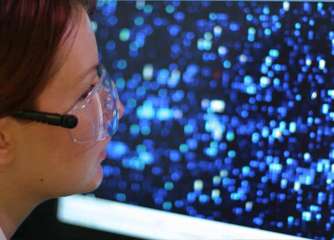Collaboration between research groups is key in tackling rare diseases such as auto-immune disease myasthenia gravis (MG). Indeed, the rarity of the disease means that it can be difficult to collect enough samples of blood and tissues to perform quality research. Let alone to recruit enough patients into clinical trials. To side step this problem, the EU funded project FIGHT-MG has established a network of 11 leading MG research groups in Europe.
This allows the team to tackle the disease from all angles and better understand the disconnect between the nervous and muscular systems by sharing resources and testing duties. This approach has had previous successes. For example, Sonia Berrih-Aknin, project coordinator, who is also director of research in immunology leading a team on MG at INSERM, in Paris, France, cites examples such as a recent multinational study on twins carried out in partner countries, and a Greek study that identified a new player in the disease using blood samples collected within the network.
Before developing new treatments, it is key to understand the mechanisms of the disease. "The immune system is quite complicated," says Berrih-Aknin, explaining that in MG the immune system is activated at many different levels. She believes that adult stem cells could modulate "all the different pathways of the immune system and could be much more efficient than the therapies available today." Although stem cell therapy has already been used to treat other diseases, this approach will not be without its challenges. "We have a lot of data showing that it is not sufficient to use the stem cells in a resting state but you have to condition them," says Berrih-Aknin, adding: "we will need to define very precisely how to do that."
Support from a network of leading researchers across Europe specialised in a rare auto-immune disease with unmet medical needs could help test several novel treatments.
One expert agrees. "As a treatment, cell-based therapies are in their infancy," says Henry Kaminski, professor of neurology, pharmacology and physiology at George Washington University, in Washington DC, USA. "The ability to grow cells uniformly across medical centres, the response of a diverse group of patients, and the potential adverse effects of these treatments will require a great deal of time and money to determine their ultimate therapeutic value," he tells youris.com.
Another strategy Berrih-Aknin's team is taking is to use antibodies that very specifically target and block the action of key immune system components implicated in MG. "We have done a lot of work on the pathophysiology of the disease and we have some specific targets," says Berrih-Aknin. Sara Fuchs, professor of neuro-immunology at the Weizmann Institute of Science, Rehovot, Israel, also believes monocloncal antibody therapy is "a very promising approach." She tells youris.com that "monoclonal antibody therapy may have less side-effects and be less costly than other available immuno-therapies such as cell therapy."
Ultimately, Berrih-Aknin believes her team has everything in place to have a treatment in clinical trials within three years. "We have very good relevant models. The molecules that we would like to use are already on the market. We have strong consultation of patients behind the project and collaboration with physicians," she says.
Provided by Youris.com



















